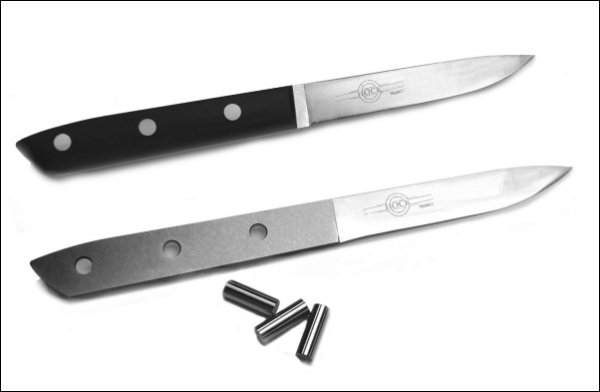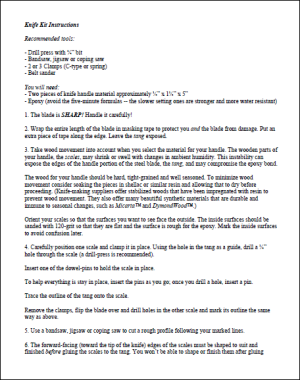I ordered this Hock Paring Knife Kit from Hock Tools. The 3.5 inch paring knife kit consists of a wonderful Hock blade and the necessary pins. The kit is Model #KP350.
This knife is for my Aunt Sue and Uncle Tom. It will have handle scales from purpleheart. For the most part, all of the steps in this process are identical to the first knife. The entire knife 1 build process can be seen here.
Info about knife kits is available at Hock site
|
|
The #KP350 blade is made from high-carbon tool steel. It was forged in France and sharpened by Ron in California. |
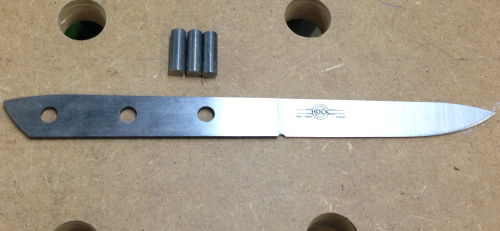 |
|
|
Wood selection: Purpleheart, Amaranth Peltogyne spp. Central and South America More info about purpleheart here. |
 |
A purpleheart blank for the scales. |
 |
Trimming the blank with a handsaw. |
 |
Shaping the blank with a rasp. |
 |
I drilled the holes for the pins. First I laid out the hole location using the tang... |
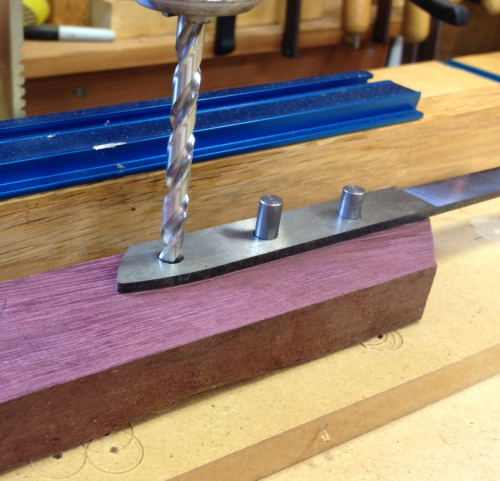 |
...just enough to make a mark. |
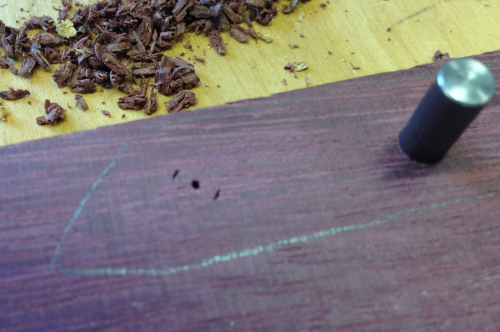 |
Then the blade was removed to drill the hole. |
 |
Cutting the blank in half at the bandsaw... |
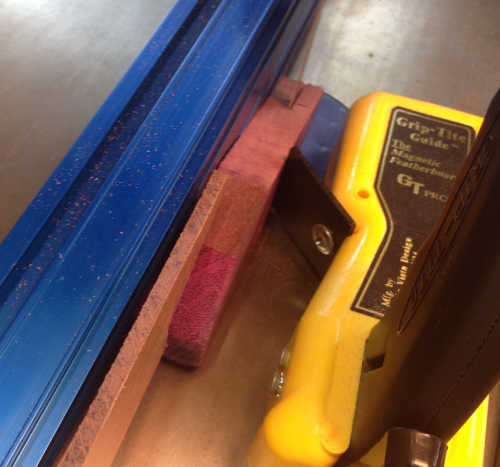 |
The blade comes quite sharp...it was taped off to protect the sharp edge and me. The scale shape is marked out...roughed out and a final dry fit. |
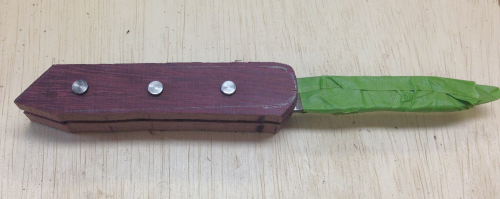 |
All to-be-expoxied surfaces...scales, blade, and pins...were roughed up with 120x sandpaper and then cleaned with acetone. |
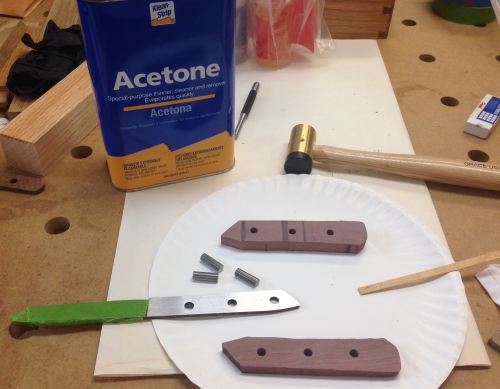 |
|
|
|
The inside surfaces of the scales and the tang of the blade were sanded to 150x to provide a better adhesion surface. Then the mating surfaces and the pins were cleaned with acetone. |
 |
I chose a strong, water-resitant epoxy adhesive, Devcon 2 Ton® Epoxy...comes in two 4.5 oz. bottles. |
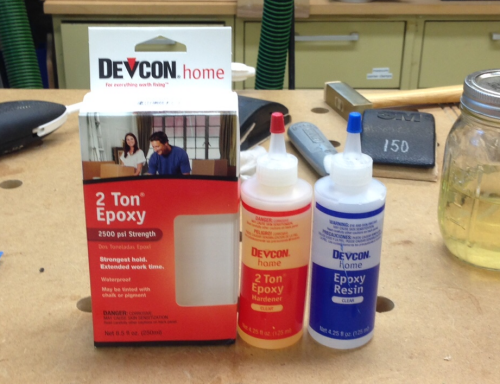 |
To mix...equal dollops of the resin and the hardener were squeezed out. |
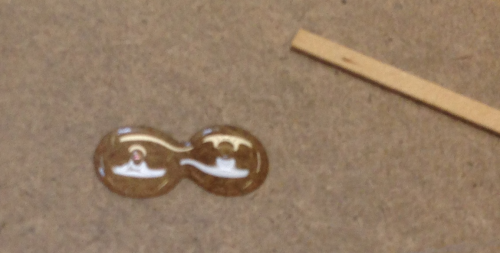 |
then mixed... |
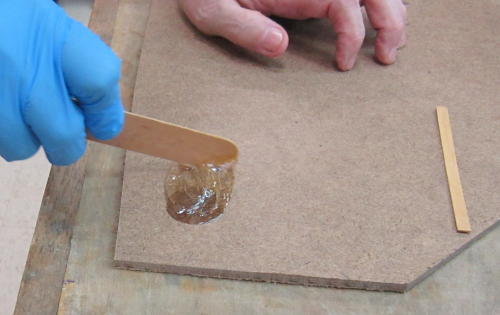 |
The adhesive was then spread on to one side of the tang...then the knife tang and the pins... |
 |
The pins are then tapped to be slightly proud on the side of the thinner scale. |
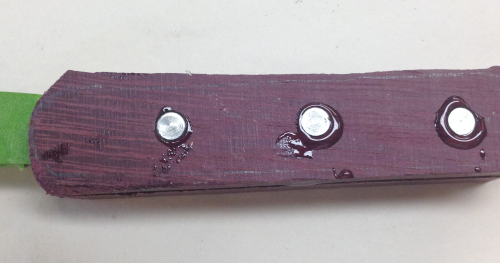 |
Tang, pins, and scales epoxied...
Clamped up with Bessys... |
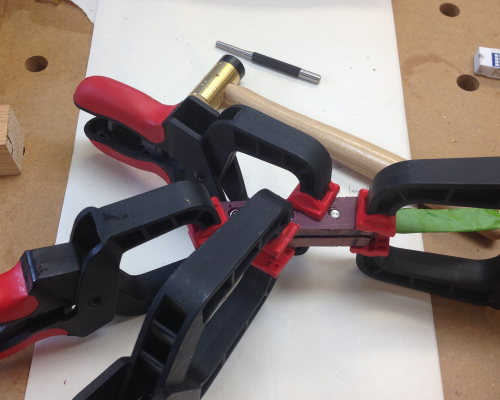 |
After glue-up...ready for grinding and sanding. |
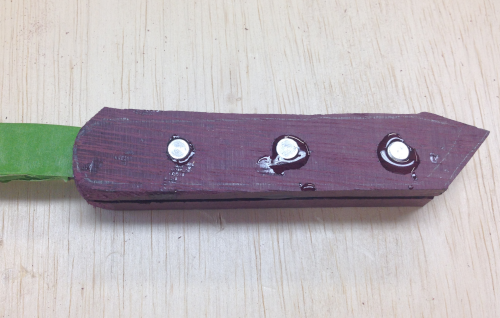 |
After glue up and roughing out the shape, the next phase was the grinding of the wood and the metal was done on a belt sander with 80x paper. I try to avoid dust so I ran both shop air filter systems and wore a protective mask.
|
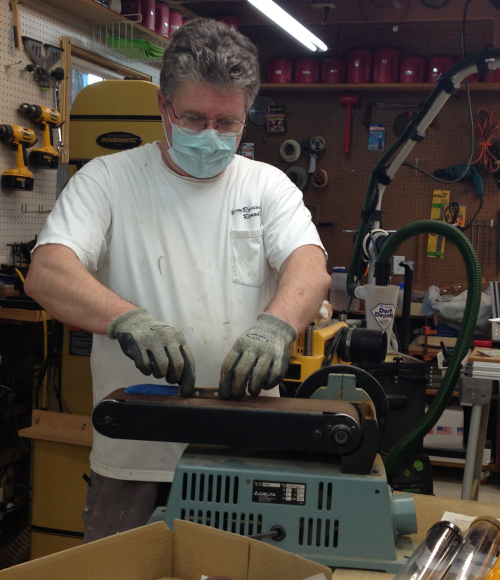 |
Here is the knife after the 80x grind down....down to smooth pins... |
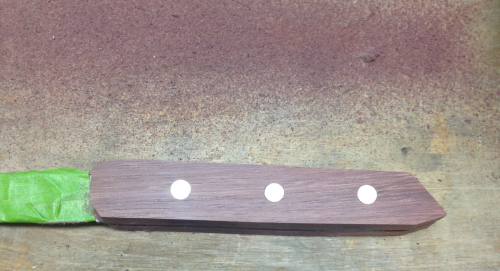 |
Some work remained after the belt sanding and the blank was held in the patternmaker's vise. It was especially important to sand this lightly because the end grain of purpleheart burns easily.
|
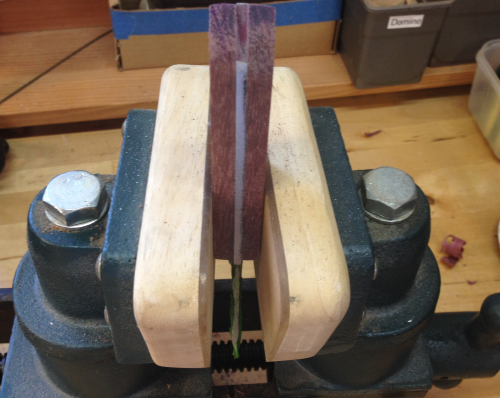 |
Further removal of metal and wood was done with the Rotex 90 sander with 40x paper |
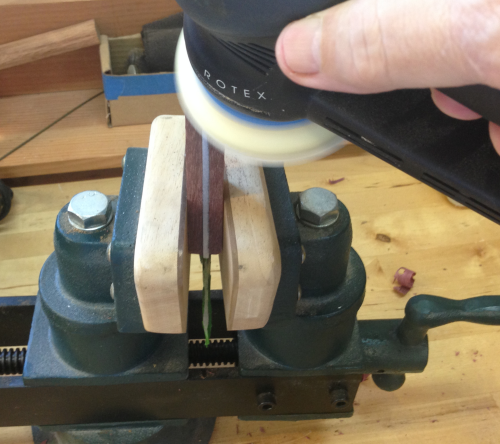 |
After all the metal and wood was taken down to proper size, the knife was held in the MFT3 table... |
 |
Shaping continued with rasp work on the curvature... |
 |
...and 40x on the form. |
 |
...the grits were progressed on the Rotex 90 from 40x-80x-120x-220x-320x-400x. The finished spine... |
 |
...the finished scale face...on to the varnish... |
 |
The finishing cycle consisted of multiple coats of Waterlox wiping varnish. Each coat was saturated and then dried using wet/dry sandpaper. Two saturations and rub-ins were done at 400x and 600x and then single saturations at 800x, 1000x and 1500x.
|
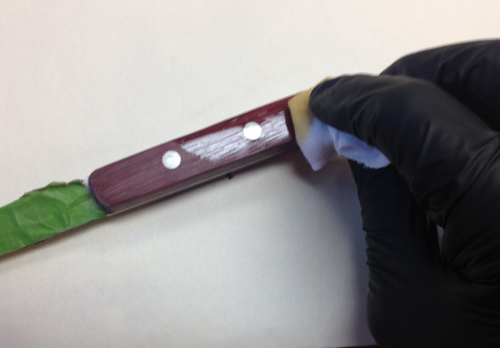 |
Done... |
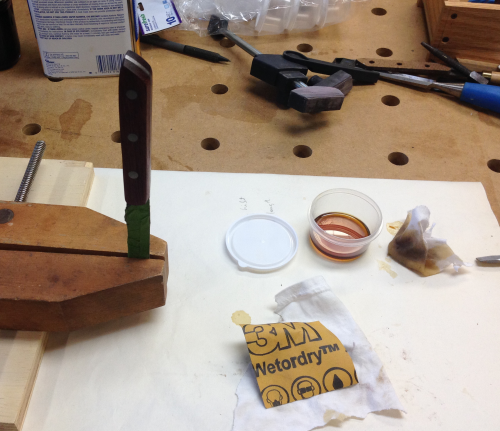 |
Final touch is to remove the tape and work on the spine edge of the blade. |
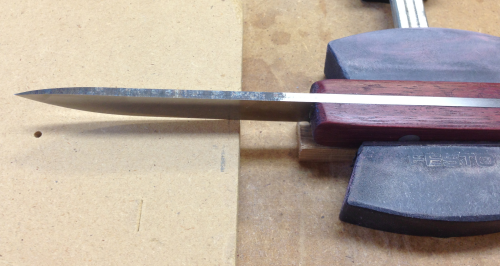 |
Finish sanding at 120x-220x-320x-400x.
All of the sanding and finishing is completed in this image. Spine... |
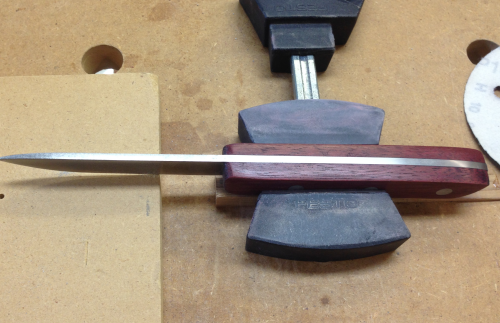 |
Finished handle... |
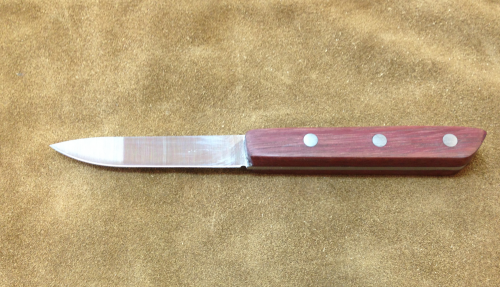 |
The finish was extremely smooth. |
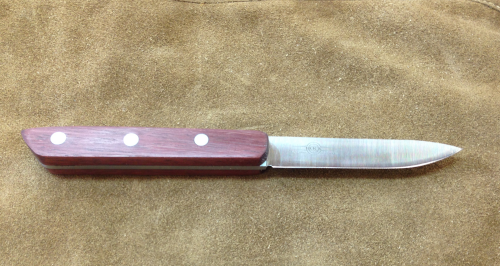 |
